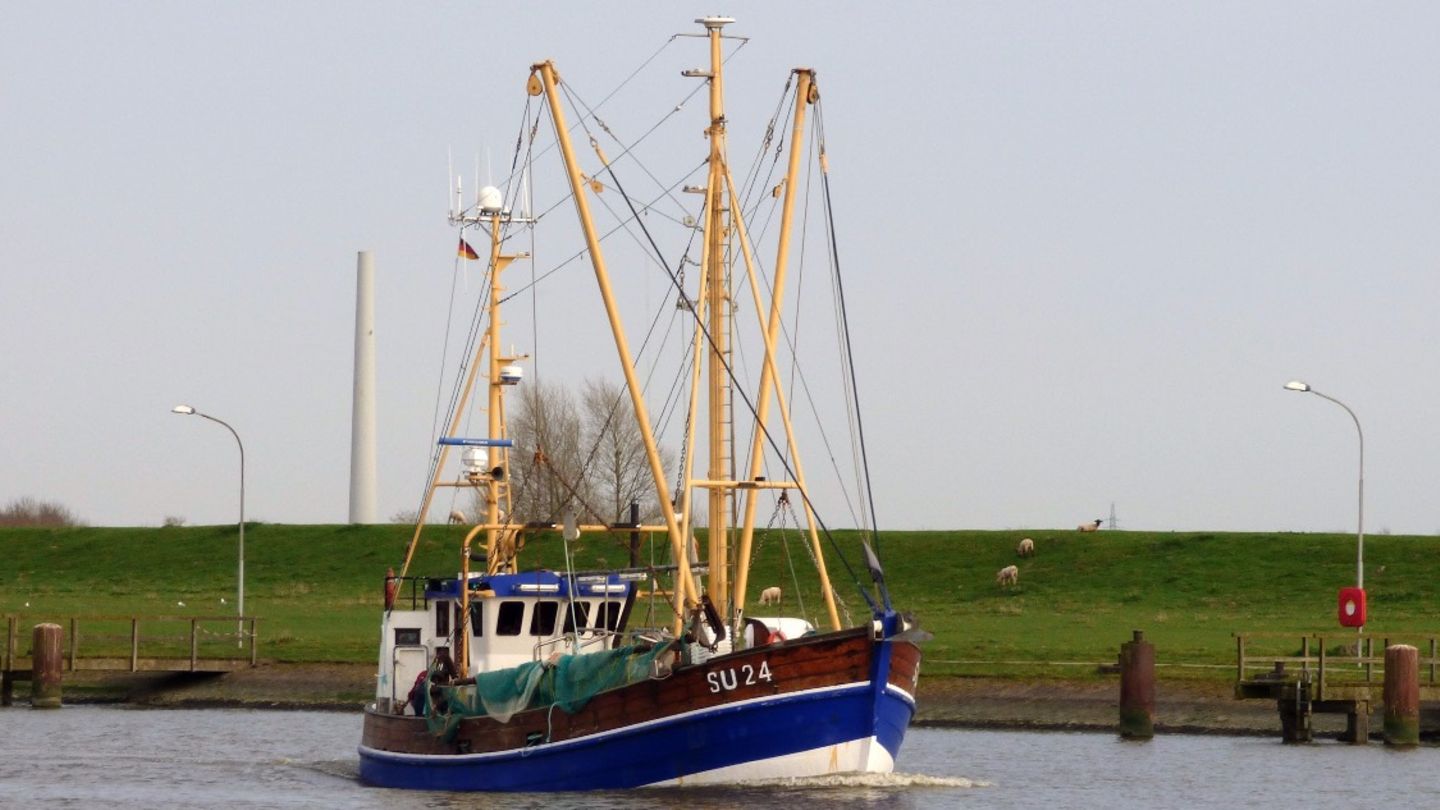interview
A shrimp fisherman in Husum went bankrupt, his insolvency administrator sent out a call for help via the LinkedIn careers network – and was successful. In an interview, Arno Doebert explains how he came up with the unusual idea – and what happened next.
By Jan Woller
Herr Doebert, in which they asked for help for a bankrupt shrimp boat. Why was the cutter slipped into bankruptcy?
The fisherman bought the cutter in 2018. Since then, the industry has been in crisis. Because the catch in 2018 was very good, there was an exceptionally high supply – and bad prices. The buyers stored large quantities of frozen goods and initially reduced these stocks in 2019. They have therefore continued to pay poor prices and have taken relatively small quantities of new goods from the fishermen. You have to know that unpeeled North Sea shrimp can only be sold in small quantities and that peeling in Germany is so expensive that the end products would hardly be salable.
What does that mean for the fishermen?
The crabs are transported abroad by truck, mainly to Morocco. There they are picked and brought back. This logistics chain is dominated by the big buyers, who can also dictate quantities and prices. In 2020 Corona was added. As a result, demand from the catering industry fell. 2021 wasn’t much better: prices remained bad. As a result, many fishermen – like my debtor – have their backs to the wall. He then decided to file for bankruptcy.
A Linkedin call for help is not part of the standard repertoire of an insolvency administrator. How do you usually proceed in such cases?
I try to maximize the mass in the interest of the creditors. In most cases, a rescue solution is economically more lucrative than liquidation. After all, if the company is broken up, there is usually nothing left of the proceeds due to the operational phase-out costs such as wages or rent. In order to preserve jobs and for economic reasons, insolvency administrators usually try to find a continuation solution. In the case of classic, slightly larger companies, M&A consultants are called in to find buyers. But that would be far too expensive for smaller insolvencies. So you look for handpicked investors in the industry and in the immediate vicinity for small businesses. In our case, it could have been a larger fishing company nearby that could have bought the cutter and taken over the crew. That would have been the classic way, but it wasn’t successful here.
Why not?
Nobody is interested in a rather small wooden cutter from 1969. Anyone who wants to buy a cutter now wants one with a steel hull. There are currently some on the market. But even those can hardly be sold at the moment.
How did you come up with the idea of looking for investors via a social network?
All other ideas had failed. I should have shut down operations on February 1st and clarified with the bank who would now bear the costs for the mooring and maintenance for weeks or months. Namely for a ship that is moored in the harbor, that no longer belongs to the fisherman from an economic point of view and that only costs money every day. Presumably one would have had to negotiate very soon about the scrapping costs. The fisherman and his deckhand would then have lost their jobs, to which they are so attached despite the hard work. The solution could only be something unconventional. I had nothing to lose. That’s how I came up with the idea of the Linkedin post.
How was the reaction?
There was an amazing response within a very short time. To date, almost 600,000 people have seen the post. Hundreds of messages and ideas came in on how to help the fisherman. I couldn’t keep up with the answers. One exciting approach, for example, was the suggestion to organize crowdfunding. However, such a collection campaign is outside my area of responsibility. As a provisional insolvency administrator, I cannot set up crowdfunding. In addition, for a sale we needed a legal person or company to be the new owner of the cutter and the seafarers’ employer. It couldn’t be the crowd. Added to this was the high time pressure due to the forthcoming opening of the proceedings. Therefore, we could not pursue this approach further for the time being. I also got a lot of messages from potential investors who knew time was of the essence. Many of them were willing to provide the necessary money and set up a new GmbH to operate the cutter. I had intensive discussions with many of them on the first day after posting. Finally, Mr. Simon-Schröter approached me and offered a solution that I couldn’t say no to.
How so?
A shipping company for special ships, Opus Marine GmbH, also belongs to Mr. Simon-Schröter’s Zeitfracht Group. The cutter and crew can be integrated into the structure of this company, thereby receiving technical support, insurance cover and much more. The two seafarers get secure employment contracts and a financial share in good catches. Above all, in the course of the transaction he will receive enough money to pay off his debts and avoid the opening of insolvency proceedings. So he can continue to do what he loves so much in the future: shrimp fishing. He also no longer has to worry about the many unloved administrative things of self-employment. And the creditors get their money back. An ideal result.
Could your approach catch on?
I do not believe that. Structured M&A processes will continue to be carried out in classic corporate insolvencies. Here we had an exceptional case with a high level of sympathy and attention. In a similar constellation, one could perhaps try the route via social networks again if there are no other options. But with a snack bar or a locksmith you don’t even have to try something like that. And if a larger company went bankrupt, that wouldn’t be an option either. We will continue to fall back on the conventional and proven processes.
What did you take away from the story?
I was overwhelmed by how positive the reactions were and how constructive and interested the users were. Social media is insanely explosive when a story goes viral. Maybe that sounds a bit trite, but you can definitely take away that you shouldn’t give up too quickly. It was a last try and it worked. But I would also like to emphasize that this individual fate stands for a battered industry. I was able to solve an isolated case, but many others still need help.
Has anything changed for you?
My post has led to a flood of messages and inquiries over the past few days. But that will soon die down again. It was a beautiful story for many people. I’m happy when it sheds a better light on the insolvency administrators. I’m always surprised that we’re apparently still often perceived as rigid lawyers, numbers people and liquidators. I was able to break something with this prejudice. In reality, most bankruptcy trustees I know are very empathetic people with a lot of economic expertise who want to preserve companies and jobs if possible, rather than break them up. We see ourselves as partners, not as opponents.
This interview first appeared on
Source: Stern
Jane Stock is a technology author, who has written for 24 Hours World. She writes about the latest in technology news and trends, and is always on the lookout for new and innovative ways to improve his audience’s experience.




